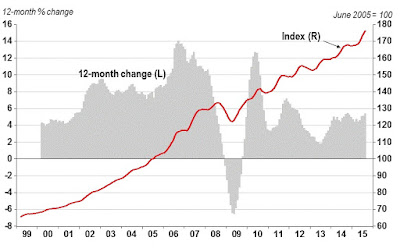We write a lot about mortgage fraud in Canada, for various
reasons. Obviously offering a tool that is a solution for mortgage fraud is one
reason, but another, far more important, reason is because of the dire impact
that mortgage fraud has in Canada and how it can lead to overall economic
instability.
The more aligned our industry is – whether you are a
lender, broker, lender, insurer, technology and other service providers, etc. -
the more we can work together to combat fraud.
You can neatly sort into groups who commits fraud and why:
1. The
seasoned fraudster – This is someone who knows that they are committing fraud
and do it for profit – this could be the borrower, a mortgage agent or flat out
delinquent.
2. The
client who “forgot” or was “confused” – This is when the customer’s actions
result in fraud. It could be missing, undisclosed or incorrect information. If
uncovered, the customer’s usual response is that they were confused or simply
forgot – not that they internally omitted or gave wrong information. Often this
proves to be true.
3. The
mortgage agent who turned their cheek – This is when flags are appearing that
an agent/broker chooses not to see because they think their deal will go
through anyways. This is when mortgage agent underwriting steps into the grey
and your bottom line takes a hit as a result.
You can perform a strong interview and ask that the client
or broker to provide supporting documents as well as conducting your own
independent verifications to ensure that you have a good, clean deal.
When it comes to doing your due diligence on a property
to which you are thinking of extending financing, there are certain things that
you can independently verify that will help mitigate the likelihood that fraud,
with respect to the property being financed, will occur. Here are 5 things that
you can independently verify at the application stage that can significantly
reduce mortgage fraud:
·
Validate homeownership information
·
Check the financial history on the property
·
Check the sales history on the property
·
Look at the property from the sky and from
the street
·
Generate an AVM to validate value
Now, we know that are you a lender, not the RCMP, and
unfortunately some fraud will slip past you, but the more you do to ensure that
you are not dealing with a fraudster, the better. You are somewhat challenged
because if the deal is coming from an agent or broker they may not give you
direct contact with the client. The more you do to independently verify
applicant information, the higher the likelihood of stopping fraud in its
tracks.
Basic due diligence, the type made easy with the tools
from Purview For Lenders, can help you mitigate the losses caused by fraud, and
make the industry more stable as a whole.
Call us today at 1.855.787.8439.

























